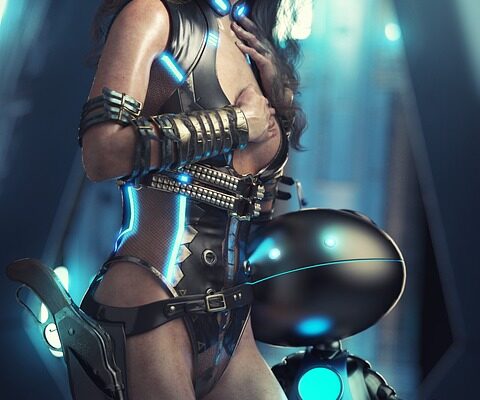The Impact of 3D Character Design on Storytelling in Animation
Introduction
In the world of animation, the design of characters plays a crucial role in the storytelling process. Character design not only helps to create visually appealing figures on screen, but it also shapes the personality, emotions, and actions of these characters. With the advancements in technology, 3D character design has become a popular choice for many animators. This article explores the impact of 3D character design on storytelling in animation.
Creating Realistic Characters
One of the biggest advantages of 3D character design is the ability to create realistic characters. With 3D modeling software, animators can add intricate details to characters, such as facial expressions, body movements, and clothing textures. This level of realism allows viewers to connect with the characters on a deeper level, making the storytelling experience more immersive and engaging.
In traditional 2D animation, characters are often limited by flat, two-dimensional shapes. With 3D character design, animators have more flexibility to create characters with depth, volume, and realistic movements. This realism helps to convey emotions more effectively and adds a layer of believability to the story.
Enhancing Visual Appeal
3D character design also enhances the visual appeal of animated films. The intricate details and realistic textures of 3D characters make them visually stunning on screen. Animators can play with lighting, shadows, and camera angles to create dynamic and visually captivating scenes.
Additionally, 3D character design allows for more complex and intricate character designs. From fantastical creatures to detailed humanoid characters, the possibilities are endless in 3D animation. These visually striking characters help to capture the audience’s attention and make the story more memorable.
Facilitating Character Development
Character development is a crucial aspect of storytelling in animation. Characters need to evolve and grow throughout the story to engage the audience and drive the plot forward. 3D character design provides animators with the tools to visually represent the growth and development of characters.
Through subtle changes in facial expressions, body language, and movements, animators can convey the emotional journey of characters. Viewers can see the progression of characters from the beginning to the end of the story, making their arc more impactful and memorable.
Creating Dynamic Action Sequences
Action sequences are a common element in animated films, especially in genres like superhero movies and fantasy adventures. 3D character design allows animators to create dynamic and intense action scenes that are visually stunning and engaging for the audience.
With 3D modeling software, animators can choreograph complex fight sequences, chase scenes, and battle sequences with ease. The detailed movements and realistic physics of 3D characters make the action sequences more thrilling and intense. These dynamic sequences add excitement and energy to the story, keeping the audience on the edge of their seats.
Conclusion
In conclusion, 3D character design has had a significant impact on storytelling in animation. The ability to create realistic characters, enhance visual appeal, facilitate character development, and create dynamic action sequences has transformed the way animators bring stories to life. With 3D character design, animators have more tools at their disposal to create immersive and engaging storytelling experiences for audiences.
As technology continues to advance, the possibilities for 3D character design in animation are endless. The future of storytelling in animation looks bright, thanks to the capabilities of 3D character design.
